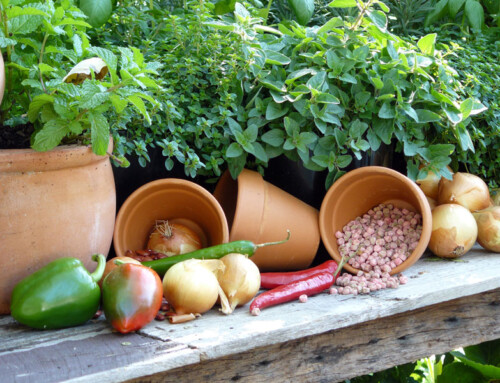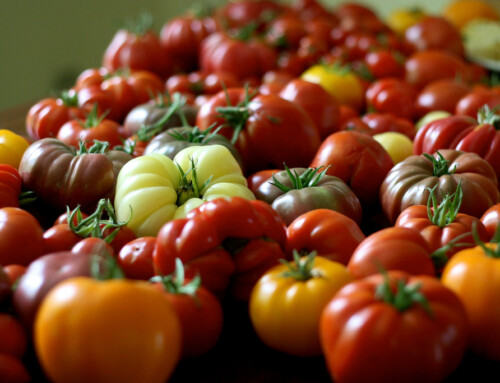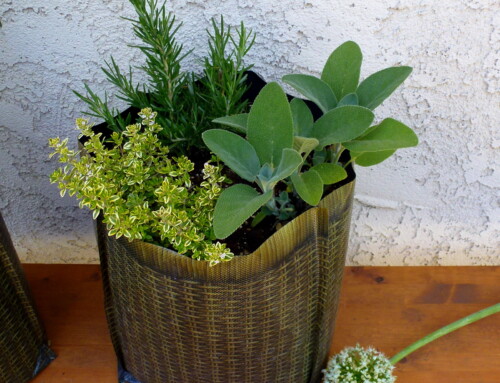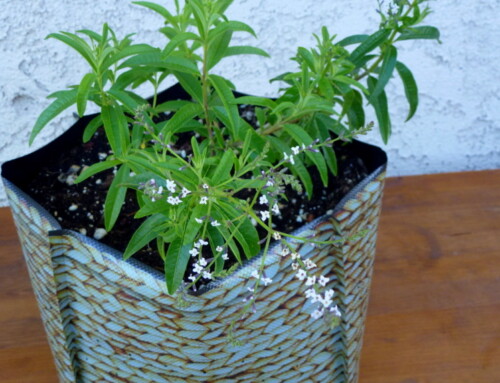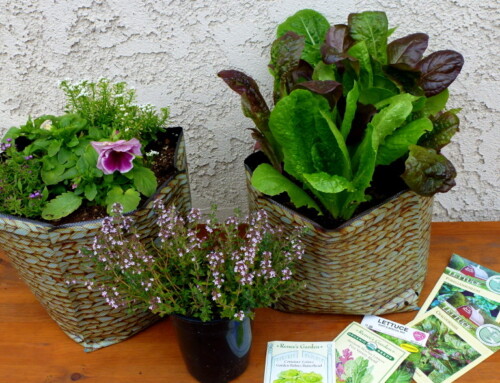Improving the Fertility, Condition and Tilth of Soils*
by Gary Kline
How does one improve the workability or tilth of a soil while also building its fertility? What do you do to a fairly compact soil which, shortly after spading-up or tilling, slumps back to where it was and, as a result, grows plants poorly? There are some definite steps you can take to remedy these and improve most farm and garden soils.
Basically we are dealing with four factors; the physical, chemical and biological, plus time. What you are attempting to do, working with nature, is to achieve the optimum combination of those four factors (or their interacting synergy) for fostering superb plant or crop growth. Again, the four factors are physical, chemical, biological and time.
Given a decent piece of ground, we start with the chemistry, which is mainly the fertilizing minerals plus organic matter to foster the biological factor, which given time, then creates the optimal physical character. This enables the whole system to hum along and produce good tilth with high fertility, leading to excellent production of high quality plants. Not only that, but it keeps snowballing as long as we recycle and keep feeding the system appropriately. As the physical characteristics are improved the biological components are magnified and the chemical effectiveness enhanced.
Ideally, the place to start is with a professional soil test that tells you what chemicals your soil is starting with and which chemicals or nutrient elements are needed, and in what quantities, to achieve nutrient completeness and balance. I refer to this as the ABC’s of correct fertilization; the right amount, balance and completeness of fertilizer materials. When the right chemistry is in place the soil biota, chiefly microbes and earthworms (but also influenced by any existing plant roots), go to work on the physical character, ultimately leading to suitable conditions of aeration, moisture retention and drainage that are optimal for plant root growth. To repeat, those three desirable soil conditions are aeration, retention and drainage.
Under these conditions the physical structure of the soil and soil particles is transformed; the soil biota are stimulated and their activities lead to enhanced nutrient release and availability, thereby benefiting plant roots. The roots respond by discharging juicy exudates that feed the microbes and set up a symbiosis and an enriched micro-environment known as the rhizosphere. This zone is just a fraction of an inch all around the roots, the root tip and root hairs where all the action is, as the root is then enabled to easily extend and penetrate into new territory. He who exploits the most territory and nutrient resources wins.
Root tips exploit about ten percent of the soil volume that they move into. In the process the roots, in most cases, are accompanied by mycorrhizal fungi which greatly multiply the effective exploitation of the soil volume in another case of symbiosis where the fungi scavenge minerals that are then sent back to the plant in exchange for carbohydrates provided to them from the plant. Where soils are unusually poor and lacking in adequate organic matter, it pays to inoculate them with mycorrhizae.
As roots die and decompose, they become food and an energy source for the microbes and the earthworms that also play a role in processing and creating topsoil and thus in providing nutrition to plants. Along the way microbes are feasted on by other small soil critters that have their contributing role in feeding plants and creating topsoil of high quality and workability. Another term for all this reciprocity arrangement is mutualism. Upstanding soil citizens observe the Golden Rule for the greater good. This is not to ignore the competition between competing plants.
Along with fertilizing minerals, some organic matter in the form of manures, leaves, compost, garden weeds and residues, and so on, need to be supplied for fostering the soil biota and enabling the transformation of the soil’s structure, its lasting loftiness and porosity for holding and transmitting or exchanging air and moisture. Organic matter chiefly supplies carbon for microbe energy. Organic matter having less than a 30 to 1 carbon to nitrogen ratio works best. When it gets reduced and transformed to a humus state, the ratio becomes about 10 to 1, carbon to nitrogen. The way these lasting characteristics come about is through the creation of soil aggregates or crumbs of roughly BB shot size.
Soil aggregates, making for excellent and relatively sustained good tilth are, again, the product of synergy of the four basic factors mentioned above. All of this synergy functions best in the upper eight inches or aerated zone. Both microbes and earthworms manufacture and secrete complex sugars and slimy substances that act as glues. These glues cause small soil particles of clay, etc. and humus bits to stick together in small, irregular balls.
These balls or crumbs are further knit together by fungal threads and thus take on a consistency that resists being dissolved over a reasonable time by rainwater or watering. Both within and between crumb particles are pore spaces for holding air and water. Ideally these should be 50/50 air and water. In addition, the crumbs also make perfect housing for some living microbes where they are safe from larger marauding soil critters, and thus the microbes are able to proliferate and probably feed on the humus particles and process the clay minerals in a protected and somewhat sloppy fashion that provides an excess of available nutrients for roots to pick up as they move by. Actually, the way these liberated nutrients become available to plants may be from the excretions of microbes and other soil biota.
In order for plants to grow, plant roots need to be continually pushing out into new soil territory and picking up water and nutrients. Essentially all of the feeding done by roots occurs in the leading inch of the root tip, while behind that the root becomes callused over with a sort of underground bark and loses its ability to take up water and nutrients. Roots that get cut off can generally initiate new feeder roots.
In compacted or tight soil lacking oxygen the root must exert extra energy and may only grow a half inch or less in a day. In ideal, porous, aggregated soil it may grow up to three inches a day. In compacted soil CO2 generated from the roots cannot escape and contributes to creation of an unfriendly anaerobic soil environment which also raises acidity (lowers the pH). Most disease organisms, called pathogens, are anaerobes that can’t stand oxygen. So, in simple terms, how do we convert a tight or compacted soil (that won’t stay fluffy after being tilled) to a loose, oxygenated, easily worked and easily penetrated soil that maintains its loft? Generally we want to try to accomplish that in fairly short order, so I’ll give my recommendations for practical garden soil treatment or creation.
One good thing you can say about clays is that usually they have a high capacity to hold mineral nutrients, which is referred to as cation exchange capacity. But you may have to add those minerals.
There are three or four things that can be applied to loosen clayey or tight or collapsed soil “organically”. Keep in mind that rain and gravity are constantly working to compress soil, and these persistent forces need to be offset. The first thing is organic matter such as quality compost, worm castings, or aged manure, preferably. Secondly is lime. Usually you want to use calcium carbonate or agricultural/garden lime and not dolomite (unless a professional soil test calls for it). Dolomite is high in magnesium which tends to tighten soils, whereas calcitic lime (the calcium) loosens soils. This assumes you haven’t previously limed much.
Lime can be overdone, and so can organic matter, to the detriment of your plants (and ultimately your nutritional health). Lime may be needed to “sweeten” the soil or bring its pH into the slightly acid range for best uptake of soil nutrients. Lime is slow acting and organic matter can take a while to yield nutrients to plants. Starting out I would apply five pounds of lime per 100 square feet in the upper six inches along with an inch or two of compost or manure worked in to the same depth. Just five to ten percent (by volume) organic matter is optimal, once things settle out. There definitely is such a thing as organic matter overdose. After about ten percent, adding more becomes counterproductive and pointless.
The third material you could add is coarse sand or its equivalent aerator in the form of perlite or pumice, but not vermiculite. Vermiculite, like organic matter, soaks up water but loses its aeration capacities. Of the two, I prefer pumice to perlite, and you might want to apply up to a couple inches worked in along with the lime and organic matter. Practically speaking, however, adding sand or pumice is not always practical as it may take huge quantities to have an effect.
As for the fourth item, I recommend a complete organic fertilizer such as our BLOOM blends, assuming you are not following more specific soil test prescriptions. This may not have an immediate effect, but this whole thing is eventually about synergy of all the needed ingredients and a compacted soil likely is in need of a full spectrum of natural “chemicals” for feeding the biota and feeding your plants. Generally you will need about five pounds of complete fertilizer per 100 square feet of garden bed. Given some time for all this to interact, you should wind up with wonderfully workable and fertile soil that stays that way, given occasional replacement of the fertilizer ingredients and organic matter, as needed. GLK
© 2012 Gary L. Kline
All Rights Reserved
Black Lake Organic
4711 Black Lake Blvd. S.W.Olympia, WA 98512



